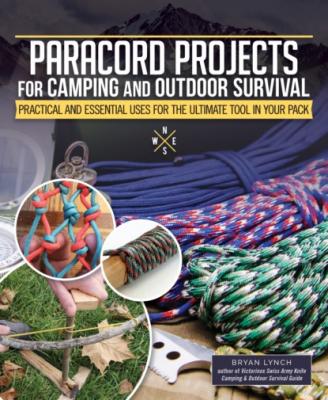ТОП просматриваемых книг сайта:
Understanding Wood Finishing, 3rd Revised Edition. Bryan Lynch
Читать онлайн.Название Understanding Wood Finishing, 3rd Revised Edition
Год выпуска 0
isbn 9781607657347
Автор произведения Bryan Lynch
Жанр Сделай Сам
Издательство Ingram
Paracord comes in many colors and designs and is sold in tidy bundles.
There are so many types of knots, bends, hitches, and lashings it’s hard to remember them all. However, there are some knots that are especially helpful in a survival situation. They are worth the effort of learning by heart.
It can be frustrating when first learning to tie knots, but regular practice will make it second nature. If you are sitting down to watch TV, have a small length of paracord with you to practice your knot-making skills. Tying knots will eventually become muscle memory, and you will soon tie them without even looking.
Know Your Knots
Overhand Knot
The overhand knot is one of the simplest knots there is. You probably already use it to tie your shoes.
1. Even though this is called the overhand knot, I have heard a few people refer to it as the “pretzel knot.” Loop and weave as shown.
2. Pull the end of the paracord to tighten the knot.
• Hitches tie cordage to an object.
• Bends tie two lengths of cordage together.
• Lashings tie two objects together.
Overhand Loop
The overhand loop is a very quick means of creating a loop that can be thrown over an anchor point. Double over one end of the paracord and create a simple overhand knot.
1. Bring the end of the paracord around to create a U shape.
2. Grab the bottom of the U shape. Fold it over itself and through the middle to create an overhand knot.
3. Pull on the loop to tighten the overhand knot.
Manharness Hitch
This allows a series of non-slipping loops to be made along the length of the paracord.
1. Twist the paracord one time onto itself in order to create a loop.
2. Bring the top left side of the paracord down and lay it across the loop.
3. Twist the bottom half of the loop to create a smaller loop.
4. Take the smaller loop you just made and bring it up and through the top loop.
5. Pull the top loop through and slowly tighten the lower two loops. This is the most important step and needs to be done slowly and correctly. Doing this step incorrectly will result in a loop that is adjustable. Don’t worry if you have trouble with this step, it just takes a lot of practice. I still find myself messing this up and having to start over.
6. When all of the steps are done correctly, you will end up with a nonadjustable loop like this.
Some

